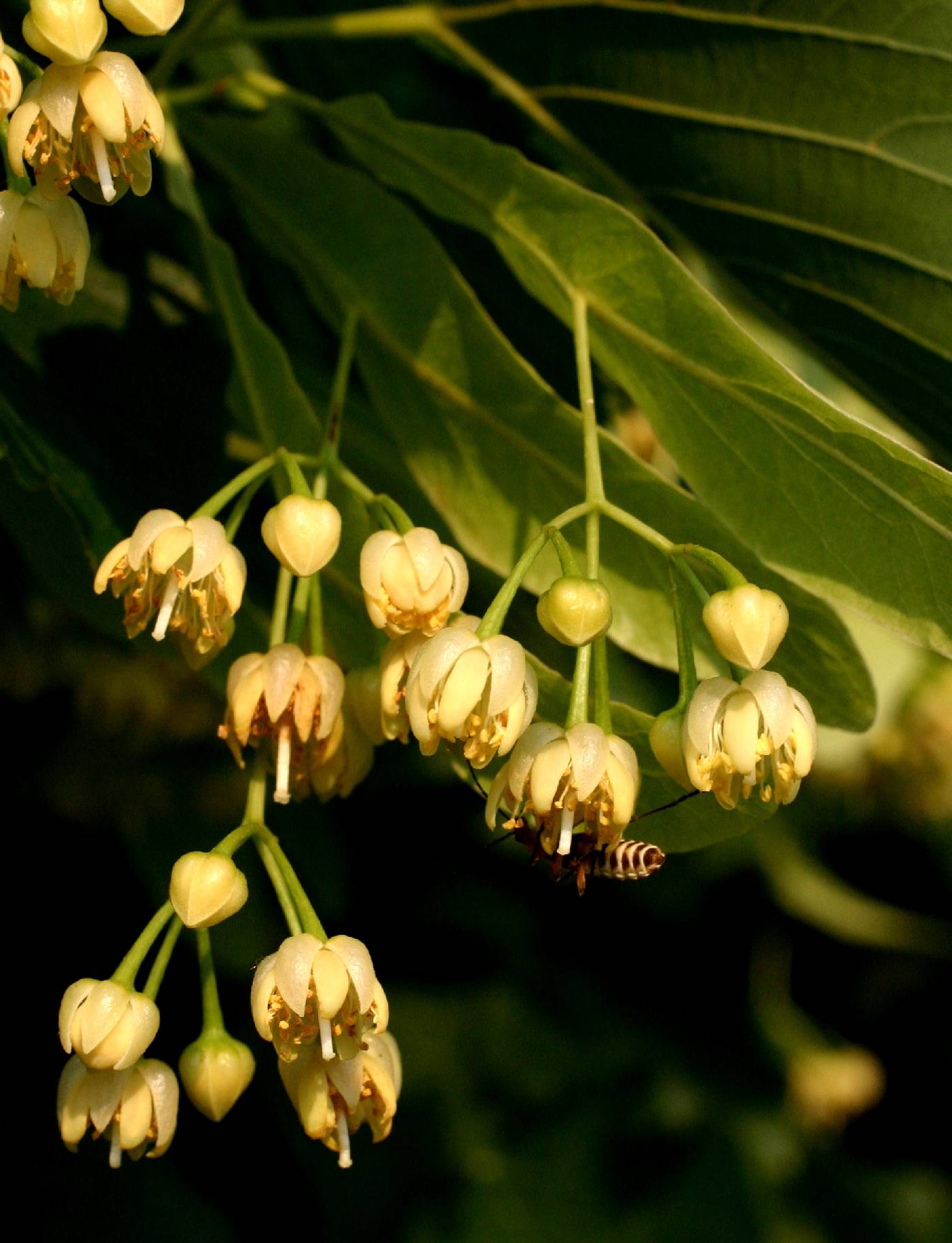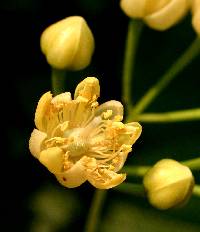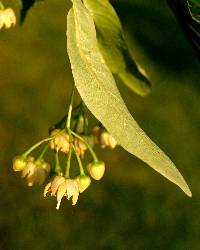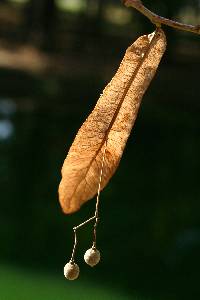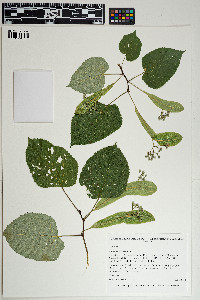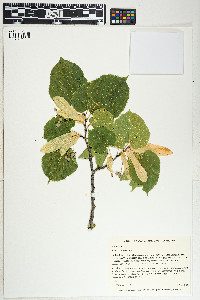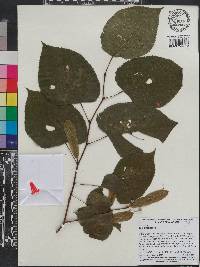Medium-sized to large tree 18 - 25 m tall, trunk diameter 40 cm - 1 m
Leaves: alternate, stalked, green above, paler and sometimes with tufts of hair beneath, 12 - 15 or more cm long, 7 - 10 cm wide, obliquely heart-shaped with an asymmetrical base and pointed tip, coarsely toothed, thin, and firm.
Flowers: long-stalked, in drooping clusters attached to a yellowish, paddle-shaped bract, greenish yellow to white, small, hairy, fragrant. Sepals five. Petals five.
Fruit: a hard, woody nut in long-stalked clusters, light brown or gray, 6 mm in diameter, spherical, finely hairy, with a short-pointed tip. The stalks are attached to a yellowish, paddle-shaped bract.
Bark: brown, thick, and deeply furrowed into long, narrow, flat-topped, scaly ridges. The ridges are nearly parallel and are sometimes interlacing.
Twigs: slender, stout, gray or brown, somewhat zigzagged. Leaf scars half-elliptical, with three or more bundle scars.
Buds: shiny green or reddish brown, 6 mm long, egg-shaped, pointed, lopsided. Bud scales usually two.
Form: broadly rounded with a straight trunk. Sprouts often growing at the base.
Similar species: The dense coat of hairs on the leaf undersides distinguishes variety heterophylla from T. americana.
Flowering: mid-June to mid-July
Habitat and ecology: Very common in dry to moist woods. Also grows in the dry conditions of high dunes found near Lake Michigan and the steep slopes of riverbanks and ravines.
Occurence in the Chicago region: native
Notes: The wood of Tilia americana is not very durable, but is used for boxes, crates, furniture parts, interior trim, veneer, plywood, pulp, fuel, and hand carving. Although planted as an ornamental, European species are more commonly used. Native Americans made rope from the bark of its young stems.
Etymology: Tilia is the Latin name for the linden or basswood tree. Americana means "from America" (North or South).
Author: The Morton Arboretum

